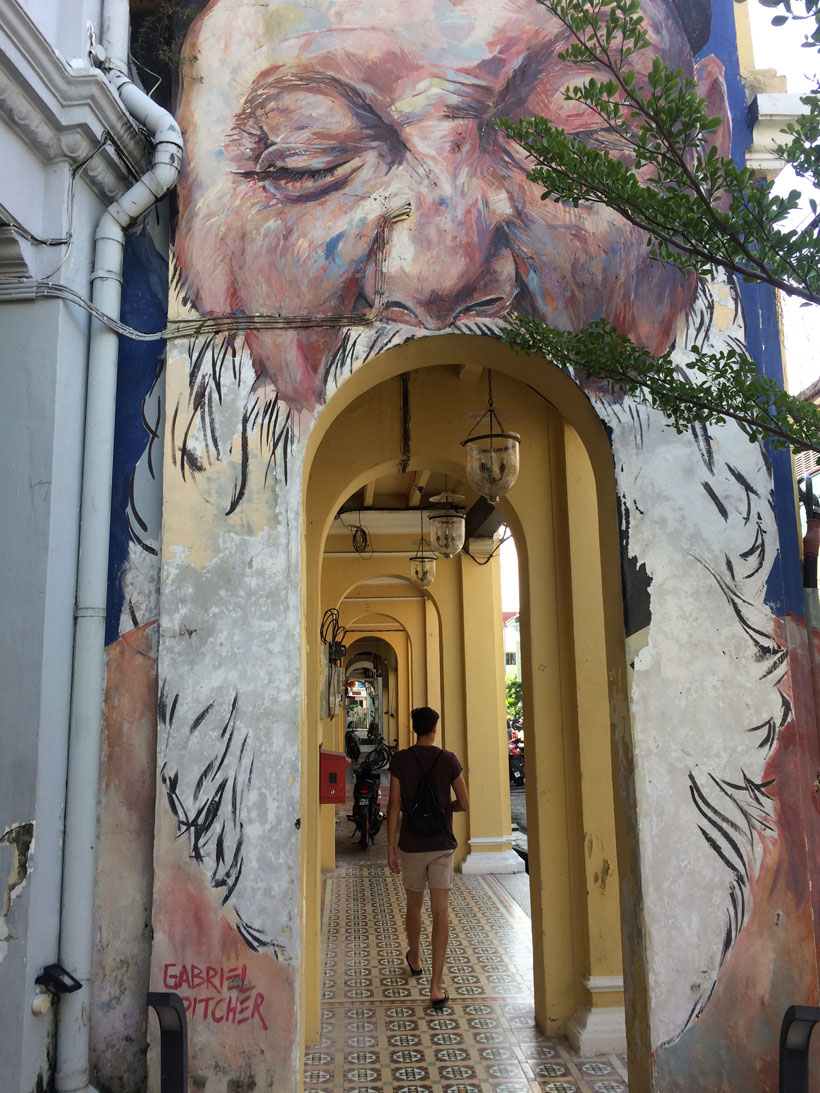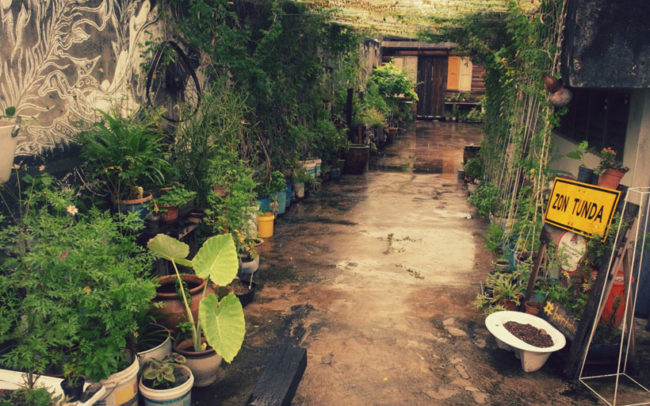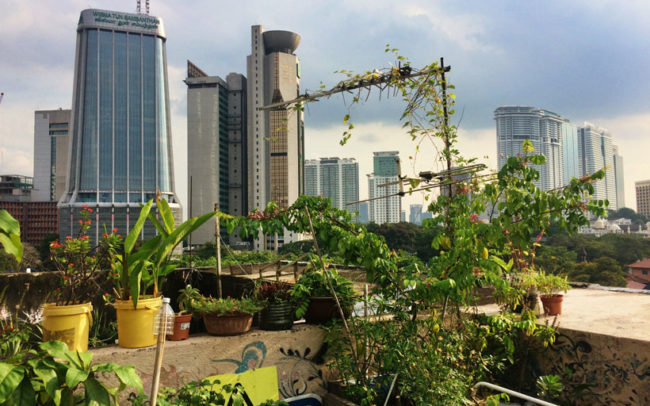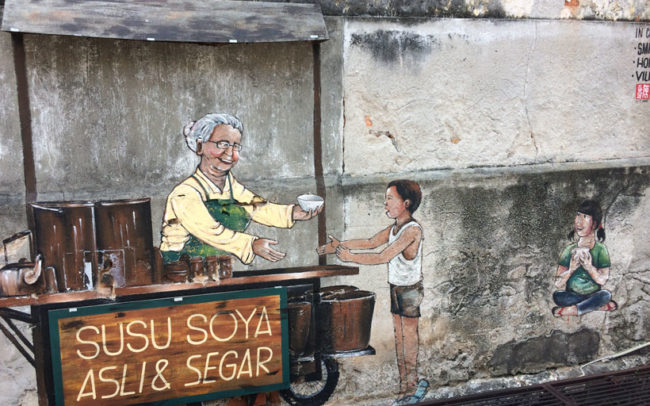Until now, all I’d seen of Kuala Lumpur was the inside of an airport. As for the Malaysian arts well, my knowledge stretched about as far as the street art shots of my Instagram feed. It was time to rectify that.
It was in at the deep end as, in typical South East Asian fashion, my bus from Singapore stopped and piled us out onto the pavement with little more than a nod. I stood, in the dark of night – between the shadows of towering blocks, amongst the flashing lights of passing traffic – without direction and without trusty wifi…
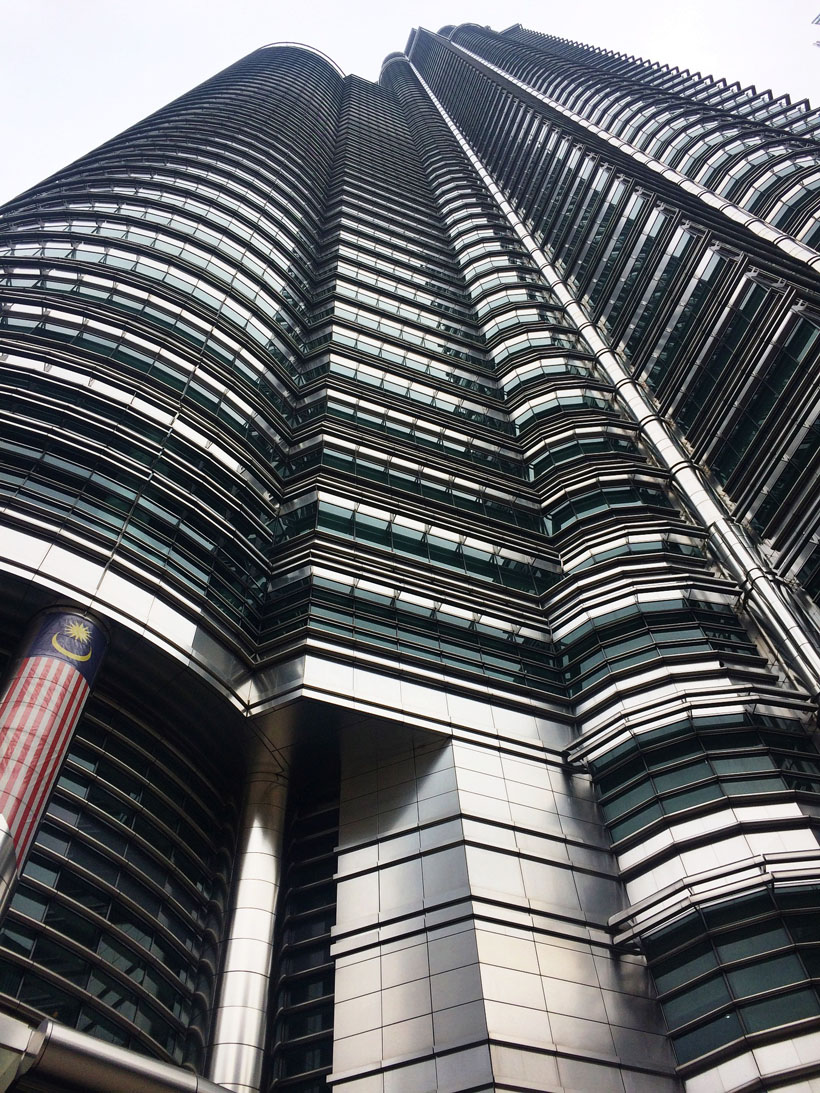
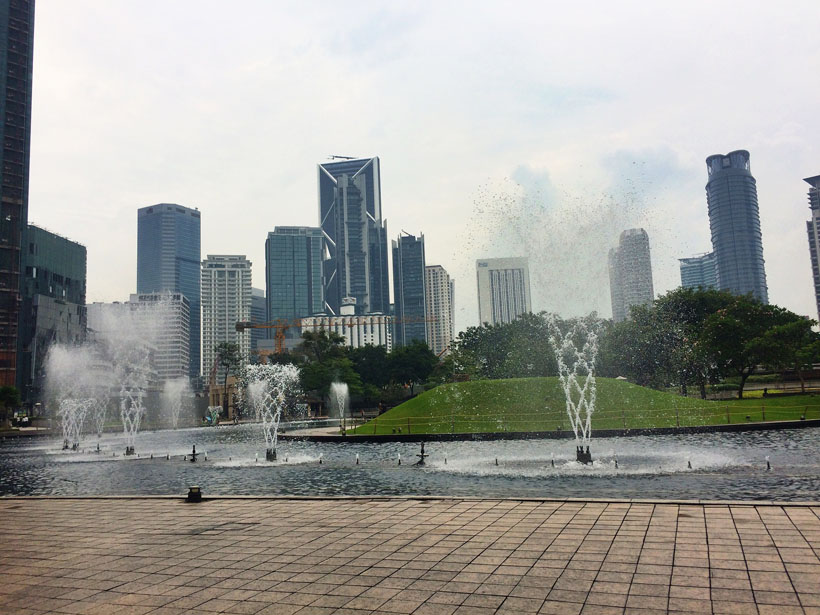
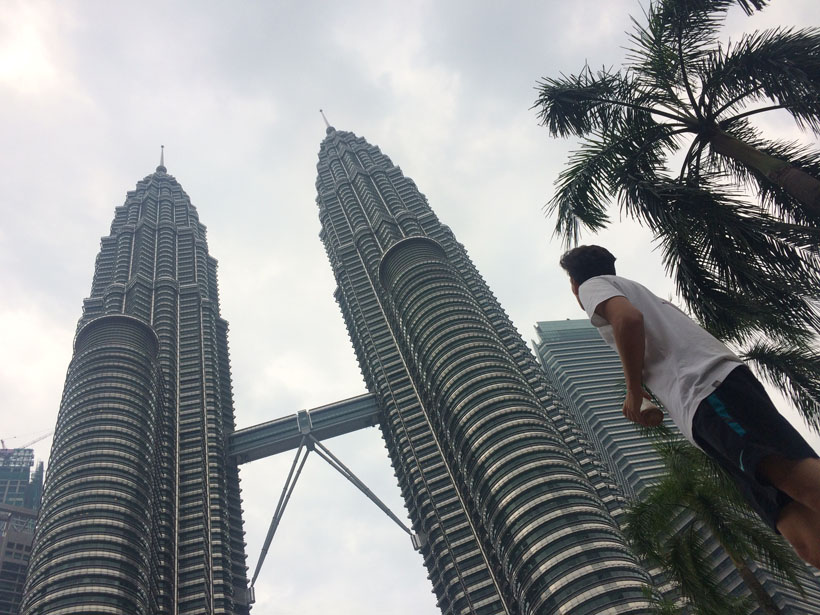
It would be easy to miss the creative spark of Kuala Lumpur. Every road sign and each transport link leads you to the bright lights of the city centre – to the Petronas Towers, manicured gardens and sparkling shopping centres. As I was exploring the city, I stumbled across Moutou, an an arts collective modestly housed in an old terraced building. I climbed a winding staircase – passing elaborate wall art and studio spaces, before reaching their rooftop bar and urban garden. The entirety of the space was built using reclaimed wood from the surrounding community – its design blending seamlessly with the gritty, urban edge of the cityscape it overlooks.

I spent the afternoon with the artists who created this space. Although some did have a background in fine arts, many spoke of their diverging creative interests – including tattoo and street art. What they did share, however, was their mutual passion for making the arts inclusive for everyone.
It was said that galleries instill a degree of formality and, speaking as someone without an artistic education or background, the white wash walls can create the feeling of a closed space – open only to those individuals who have the knowledge to share in high arts culture. Moutou is trying to overcome these exclusions by providing a space where creative energy grows organically, away from the constraints of the canvas.
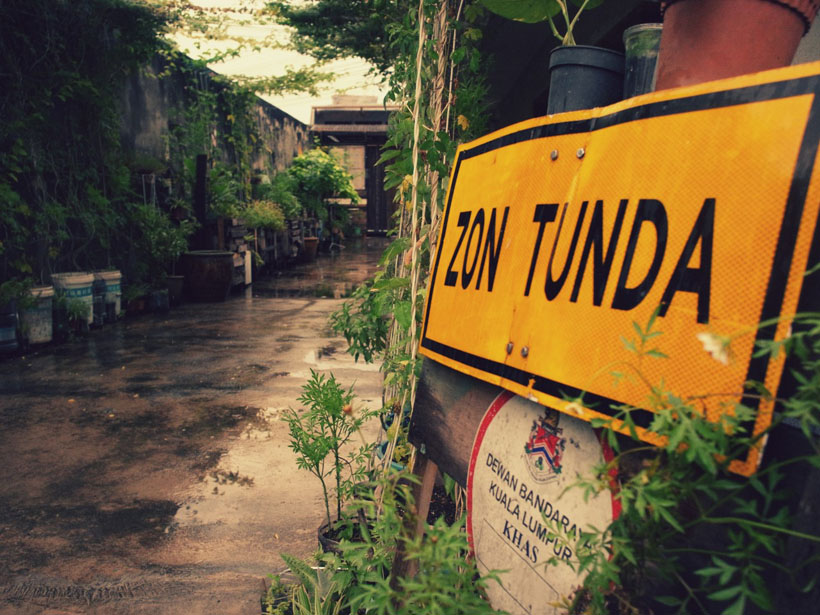
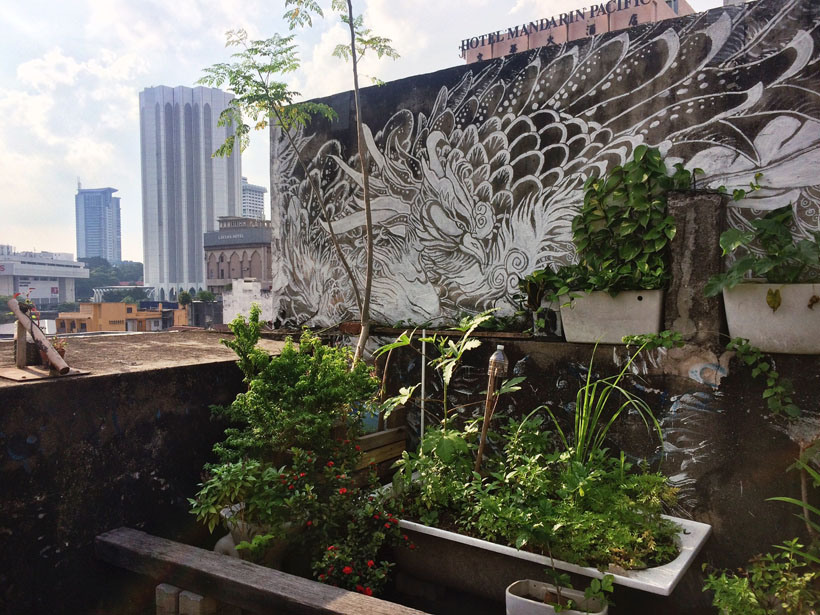
The artists of Moutou felt that the self censorship associated with exhibition artwork has slowly ebbed away at its relevance. This is where they raised the all important question, “why shouldn’t we bring art back to what matters?”. The answer? Well, we should be able to express ourselves in ways that extend beyond the boundaries of a frame – allowing our creativity to spread on to the walls, spill on to the floors and the land that surrounds us. Rather than being closed away to the confines of galleries, our creativity should become a part of the smell, feel and sound of the world we live in.
Moutou provides a space for this – where the bricks are decorated with spontaneous designs, patterns and tags. With events held every week, it is becoming a place to see the artists behind the art, to share in creative energy, or simply appreciate talent with a drink and good food.
These principles extend beyond the walls of Moutou itself. Artist, Aisya Baharuddin, runs a street art festival in her village where workshops are held for children who come to learn about the spontaneity of expression. The annual event serves as a reminder that art is everywhere and that everyone is entitled to artistic freedom. The streets of Padang Jawa have become a unique public display of the community’s collective identity.
This isn’t solely a feature of Kuala Lumpur. In fact, if you find your way to Penang, your eyes will be opened to the official commissioned street art of George Town. The city walls became an open canvas in 2012 when Lithuanian artist, Ernest Zacharevic, was invited to design giant urban designs to capture the culture and heritage of the region. Today, tourists can be seen scouring the streets in a bid to find the original pieces – engaging with artwork to capture creativity on camera.
These pieces of artwork created a snowball effect for the colonial George Town. Local artists were encouraged to join in decorating the great urban canvas, reclaiming a sense of ownership over the streets and adding to the creativity that has since become an international attraction. The old bus depot has to be my favourite spot in the city – where the run down urban jungle provides the perfect backdrop for innovative artwork, which blends seamlessly with the shapes created by surrounding bricks and rubble.
It was more than just the streets of George Town that I’d come to see. I arrived during the buzz of its annual culture month – a 30 day celebration of all things creative in the city. I spent my days walking between tribal photography exhibitions, aboriginal weaving displays and quirky pop up galleries.
Grand old-English buildings line quaint streets, where paint peels from the walls and lanterns hang high above your head. This colonial charm – much like the urban edge of Kuala Lumpur – has become a hub for creative energy. Alternative forms of artwork have made George Town the tourist attraction it is today. A place where people come from far and wide to see some of the world’s most famous examples of street art – all hoping to capture that perfect instagram of them becoming a part of the scenes created by Zacharevic.
Words and images by Emily Baldwin.
